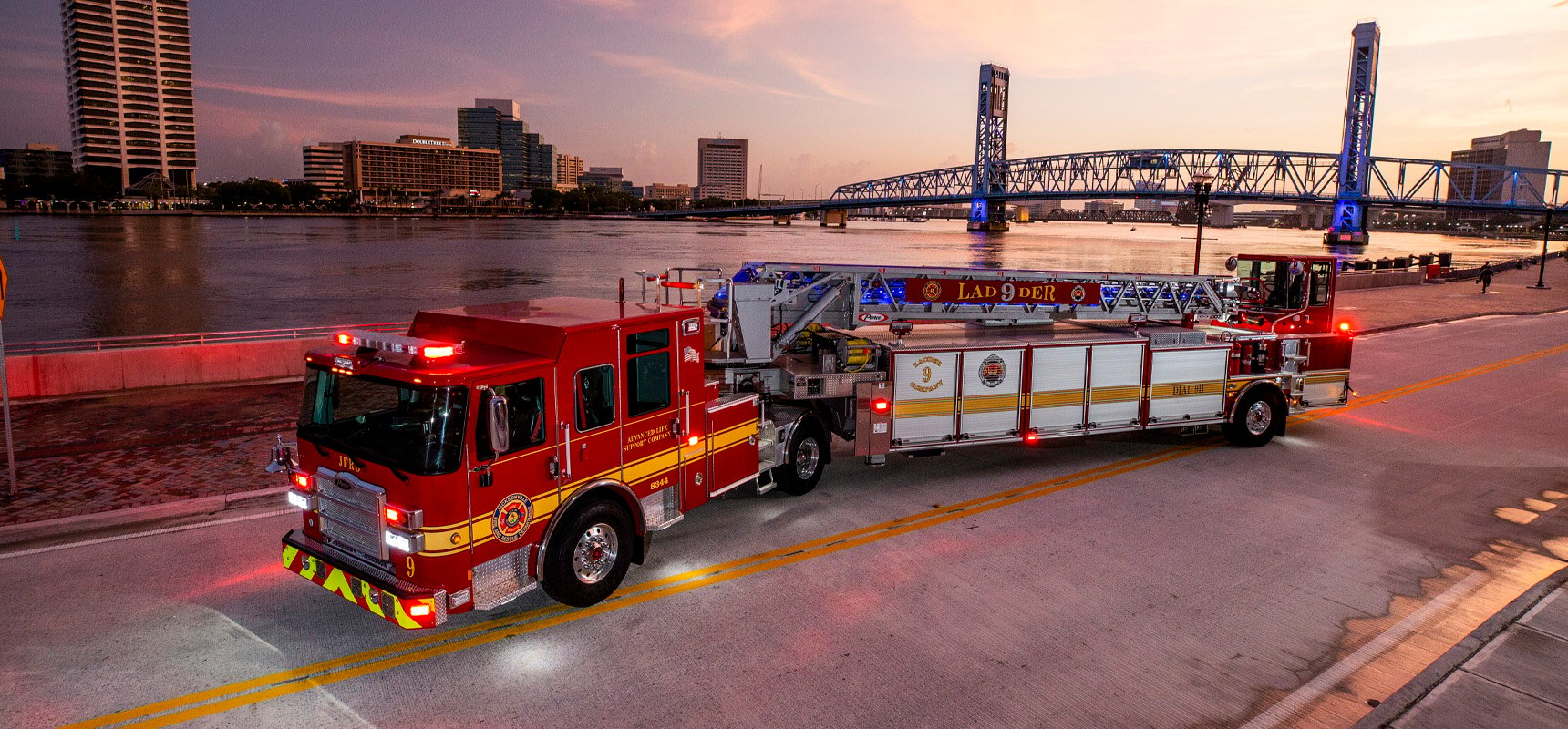
As fire departments are asked to do more with less, the resurgence of tractor drawn aerials is no surprise.
This blog is designed to answer many of the questions fire departments ask about tractor drawn aerials and show several examples of fire apparatus currently in service.
What is a Tractor Drawn Aerial?
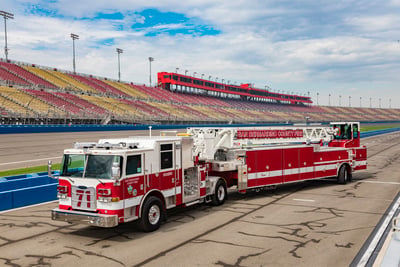
A tractor drawn aerial is the most maneuverable type of fire apparatus because of its unique design consisting of three distinct parts: a tractor, a trailer and a tillerman's cab. A typical height of a tractor drawn aerial is approximately 11’ 2” whereas rear mount aerial ladders typically range anywhere between 11’ 6” to 12’ 2” in height. The length of a tractor drawn aerial typically ranges between 57' to 63'.
Depending on your geographic location, you may have heard of this apparatus referred to as a tractor drawn aerial, a tiller fire truck or a hook and ladder fire truck.
Tractor drawn aerials can be traced back to the late 1800s when the trailers, pulled by horses, were given rear steering. Today, tractor-drawn aerials are known for their maneuverability and ability to carry many ground ladders and equipment.
How Does a Tractor Drawn Aerial Work?
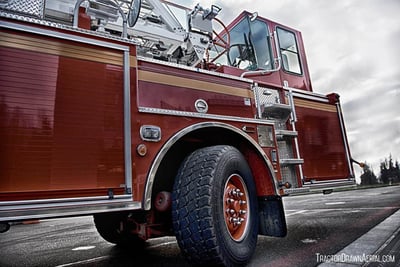 A tractor drawn aerial is designed to have two operators. The main driver sits in the front cab and steers the front axle and the other sits in the rear tiller cab and steers the rear axle. When required for maintenance, the rear axle can be locked and the front operator can drive the truck like a tractor trailer.
A tractor drawn aerial is designed to have two operators. The main driver sits in the front cab and steers the front axle and the other sits in the rear tiller cab and steers the rear axle. When required for maintenance, the rear axle can be locked and the front operator can drive the truck like a tractor trailer.
Why Are More Fire Departments Choosing Tractor Drawn Aerials?
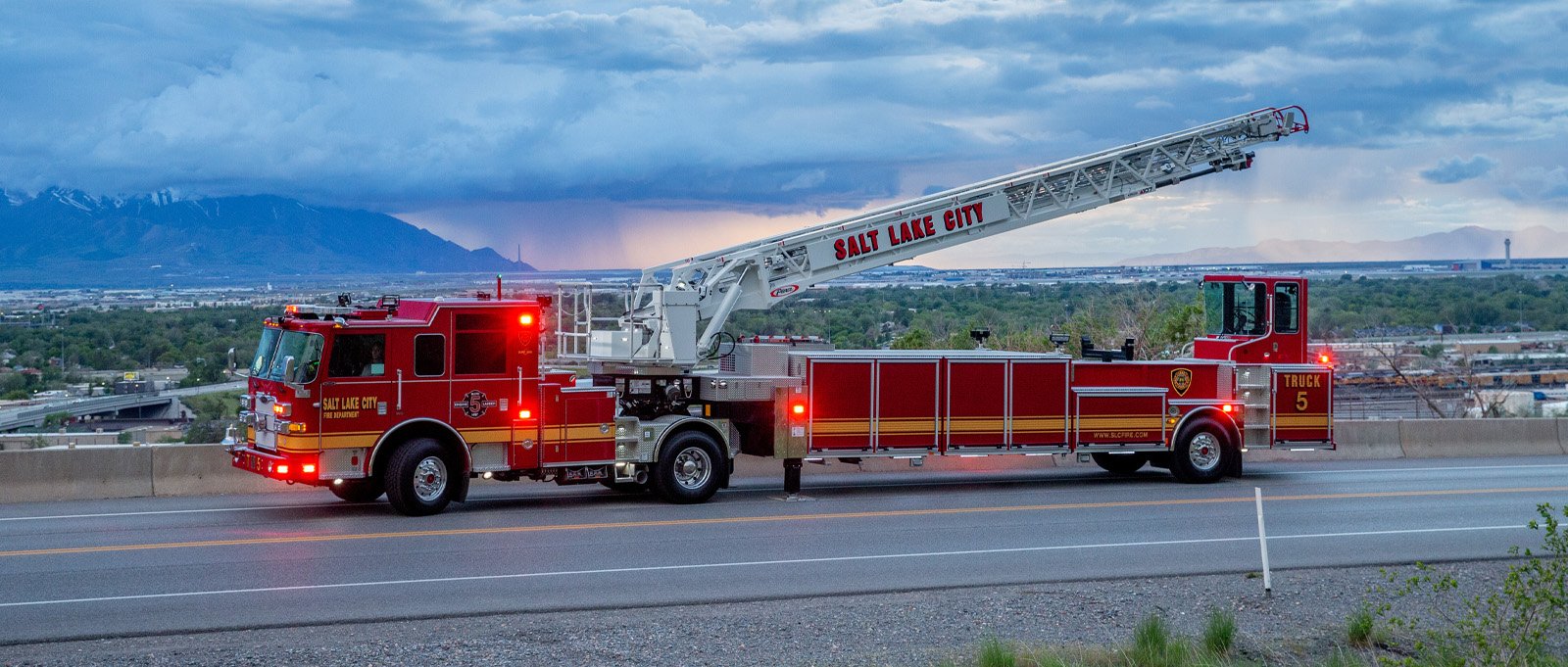
When most fire department representatives and city council members see a tiller truck for the first time, they often express disbelief that a truck of such size can be so maneuverable.
It’s all about the design features unique to this type of apparatus and several are outlined in more detail below.
Increased Compartment Space
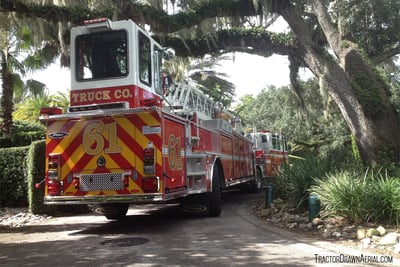 The sheer size of a tractor drawn aerial means that it offers ample storage. In fact, the compartment volume for the apparatus can be as much as 650 cubic feet. That’s a significant increase when comparing it to a straight-frame aerial with typically less than 200 cubic feet. Moreover, a tiller can typically manage 4000 lbs or more of equipment.
The sheer size of a tractor drawn aerial means that it offers ample storage. In fact, the compartment volume for the apparatus can be as much as 650 cubic feet. That’s a significant increase when comparing it to a straight-frame aerial with typically less than 200 cubic feet. Moreover, a tiller can typically manage 4000 lbs or more of equipment.
With the increased storage capabilities, tractor drawn aerials can accommodate more ground ladders than straight-frame aerials. This is due to a significantly larger rear storage area from the added length of a trailer, and the absence of a torque box and pedestal typically found on straight frame aerials. In addition, even more ground ladders can be stored on the outside of the trailer.
Tractor drawn aerials provide fire departments with superior capacity and flexibility in storing tools and equipment.
Industry-Leading Maneuverability
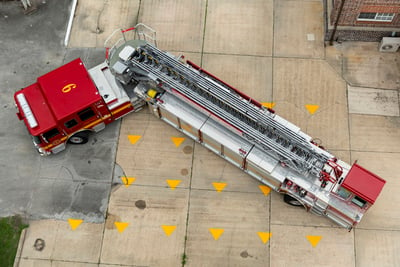 So how does a fire truck that spans between 57' to 63' in length offer the greatest maneuverability? It’s all in the mechanics.
So how does a fire truck that spans between 57' to 63' in length offer the greatest maneuverability? It’s all in the mechanics.
Tractor drawn aerials are highly maneuverable because of the fifth wheel articulation and the unique ability to steer the rear of the trailer independently. This design feature means fewer 3-point and wide-swinging turns and greatly reduces the need to go around the block to get a better position.
This maneuverability is especially critical in firefighting operations, allowing the turntable on a tiller truck to be positioned closer to buildings and structures on scene.
Tiller trucks can turn easily in suburban cul-de-sacs, traffic circles and around narrow urban street corners. That’s why you’ll often see tractor drawn aerials on college campuses with lots of alleys and walkways, in modern suburbs where many streets end in a cul du sac, and in communities with a higher percentage of apartment and condominium complexes.
Faster Set-Up Time
One of the features of a tiller truck is the fact that it only has two stabilizers. This is a great advantage when response time is the highest priority. Moreover, the stabilizers on a tiller can be set up by one person at one centralized location.
A tiller truck is an all-in-one performer that can be designed in several configurations, such as a quint, a traditional ladder, or a rescue truck with aerial ladder. Its versatility also aids in fast response times, allowing firefighters to get on scene quickly with a lot of equipment and firefighting gear on board.
Improved Visibility
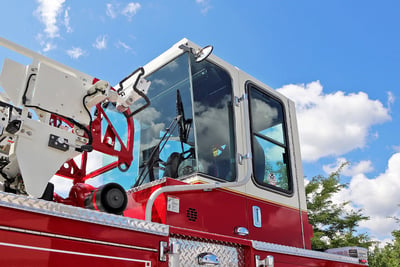 The way a tiller truck is designed allows the tiller operator to sit higher than the driver, which provides a second set of eyes in several critical situations, including:
The way a tiller truck is designed allows the tiller operator to sit higher than the driver, which provides a second set of eyes in several critical situations, including:
- Crossing through intersections
- Traffic and road blockages en route
- Setting up at an emergency
- Managing wires and other obstacles
Condensed Fleet Size
Fire departments are challenged with resources and by choosing a tiller truck, fire departments can condense fleets without compromising on performance.
Tiller fire trucks can function as a quint, combining a ladder and pumper truck. With the large amount of storage space, they can function as rescue vehicles or just all-around workhorses responding to every call.
Lighter Weight Means Less Wear and Tear
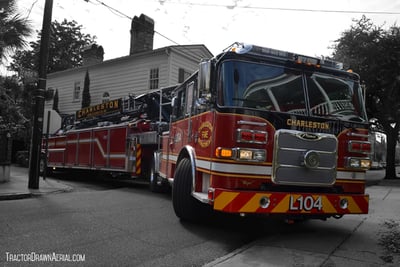 Even though the tractor drawn aerial is a large apparatus, the overall weight of the apparatus is approximately significantly lighter than an aerial platform.
Even though the tractor drawn aerial is a large apparatus, the overall weight of the apparatus is approximately significantly lighter than an aerial platform.
With a lighter overall weight, fire departments benefit from less wear and tear on the brakes, tires and suspension system with an increase in driveline performance.
Learn more about tractor drawn aerials now.
The Benefits of Choosing a Pierce Tractor Drawn Aerial
A Pierce® Manufacturing tractor drawn aerial is unique in its own right. With an Ascendant® aerial device, a Pierce TDA fire truck has many attractive features, including:
- High water flow ratings, up to 1500 GPM
- Enhanced aerial capabilities of 107’ vertical reach, 100’ horizontal reach
- -10° below grade operation
- 750 lbs tip load dry, 500 lbs tip load flowing water
- 30° vertical nozzle angle
- 17’ full extension, 12’5” short jacked stabilizer stance
- Up to 60° Jackknife angle set up
- Aerial ladder collision avoidance system with cab and body
- Full 360° turntable rotation
There are many benefits of choosing a tractor drawn aerial. It really comes down to the mission of the truck and the unique needs of your fire department.
Learn more about Pierce tractor drawn aerials by downloading this helpful brochure.
Do you love your tractor drawn aerial? Tell us why in the comments below!